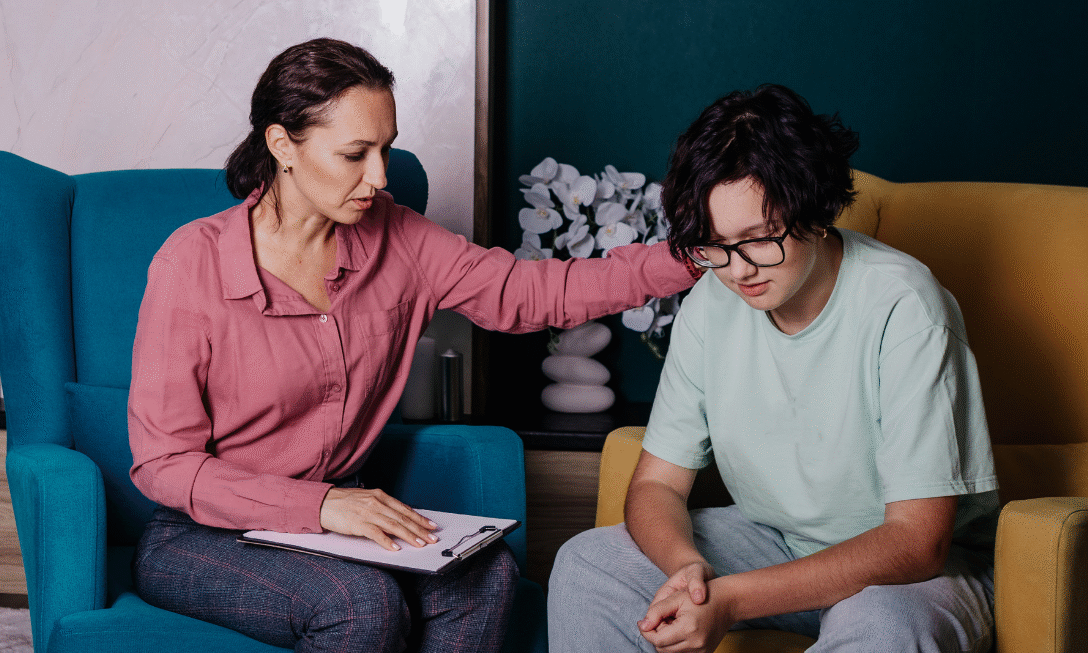Depression is not a single, uniform condition. While people often use the word “depression” as if it refers to one disorder, the reality is that there are multiple types, each with unique features, causes, and treatment approaches. Some forms are short-term and linked to specific events, while others can last for years or occur in cycles.
Understanding these different types of depression is important because recognizing the right pattern allows for more effective treatment and better support. According to the World Health Organization, depression affects over 280 million people globally, but the way it shows up in one person may be very different from another.
Why Knowing the Types of Depression Matters
Many people delay seeking help because they don’t realize their struggles fit into a recognized pattern of depression. For instance, someone who only feels depressed during winter months may not realize they have Seasonal Affective Disorder (SAD), while a new mother experiencing overwhelming sadness after childbirth might not recognize postpartum depression.
By identifying the type of depression, doctors and therapists can recommend more personalized strategies, whether that involves medication, therapy, lifestyle changes, or specialized treatments. For individuals, understanding the type also brings validation: it shows that what they are experiencing is real, common, and treatable.
Major Depressive Disorder (MDD)
This is the most widely known form of depression and the one most often diagnosed. Major depressive disorder involves persistent feelings of sadness, emptiness, and hopelessness that last for at least two weeks. People with MDD often lose interest in hobbies, withdraw from social life, and struggle to function at work or school.
- Impact on daily life: MDD disrupts everyday functioning in a way that is hard to ignore. Tasks like eating, sleeping, or getting out of bed feel draining, and people often describe a constant weight they can’t shake off.
- Risk of relapse: Even after recovery, there is a chance of relapse. This makes ongoing treatment and monitoring especially important, as early intervention can prevent future episodes.
Persistent Depressive Disorder (Dysthymia)
Unlike MDD, which can be episodic and intense, persistent depressive disorder is more chronic and long-lasting. Symptoms may not always be as severe, but they linger for two years or more, leaving people in a constant state of low mood.
- Subtle but draining: Because symptoms are often milder, people sometimes overlook this condition, dismissing it as part of their personality. Yet the ongoing fatigue, low self-esteem, and lack of motivation can quietly erode quality of life.
- Difficult to recognize: Many people with dysthymia function “well enough” to maintain jobs and relationships, but they rarely feel joy or enthusiasm, living with a muted version of life.
Bipolar Depression
Bipolar disorder involves cycles of depression and mania (extreme energy and euphoria). The depressive phase closely resembles major depression, but the alternation with manic episodes makes it unique.
- Depressive episodes: During these phases, individuals may feel hopeless, exhausted, and unable to focus, much like in MDD. These periods can last weeks or months.
- Manic contrast: In contrast, manic or hypomanic phases include bursts of energy, risk-taking, and impulsive behavior. This sharp contrast often makes bipolar depression harder to treat, as medications need to stabilize both extremes.
Seasonal Affective Disorder (SAD)
SAD is a type of depression that appears in a seasonal pattern, most often during late fall and winter. Reduced daylight is thought to disrupt the body’s internal clock and decrease serotonin levels, triggering depressive symptoms.
- Typical symptoms: People with SAD often feel tired, oversleep, crave carbohydrates, and withdraw socially during colder months. The depression usually lifts in spring and summer.
- Treatment approaches: Light therapy, which mimics natural sunlight, is often prescribed, along with vitamin D supplements, therapy, or antidepressants depending on severity.
Postpartum Depression
This form of depression affects women after childbirth, though it is distinct from the temporary “baby blues” that many mothers experience. Postpartum depression can last for months and requires medical attention.
- Emotional struggles: New mothers may feel sadness, guilt, or anxiety, sometimes believing they are inadequate or unable to care for their baby. This can create barriers to bonding.
- Importance of support: Postpartum depression is treatable, but stigma often keeps mothers silent. Support from healthcare providers, family, and therapy can significantly improve recovery.
Psychotic Depression
In some cases, severe depression is accompanied by psychotic symptoms such as hallucinations or delusions. These delusions often reflect depressive themes, such as feelings of guilt, poverty, or illness.
- Severe presentation: Psychotic depression can be frightening for both the individual and loved ones. The combination of low mood and distorted thinking increases risks of self-harm.
- Treatment necessity: This condition typically requires a combination of antidepressants and antipsychotic medications, and in some cases, electroconvulsive therapy (ECT).
Atypical Depression
Despite its name, atypical depression is fairly common. People with this type often experience mood improvement when positive events occur, but the relief is temporary.
- Unique features: Symptoms may include heavy limbs, increased appetite, oversleeping, and heightened sensitivity to rejection. These are different from the classic picture of depression.
- Treatment response: Atypical depression tends to respond better to specific types of antidepressants and therapy approaches.
Premenstrual Dysphoric Disorder (PMDD)
PMDD is a severe form of premenstrual syndrome (PMS) that significantly disrupts life. Symptoms occur in the luteal phase of the menstrual cycle and ease after menstruation begins.
- Physical and emotional impact: Women with PMDD may experience severe irritability, mood swings, anxiety, and depression alongside physical symptoms such as bloating and breast tenderness.
- Treatment approach: Lifestyle changes, antidepressants, and hormonal treatments are often recommended to ease the intensity of symptoms.
FAQs
1. How do doctors know which type of depression someone has?
Doctors usually assess symptoms, medical history, and life patterns through detailed discussions. In some cases, they use psychological questionnaires or rule out other medical conditions that mimic depression before making a clear diagnosis.
2. Can someone have more than one type of depression at the same time?
Yes. For example, a person with persistent depressive disorder may also experience major depressive episodes on top of their ongoing low mood. Similarly, postpartum depression can overlap with major depression if untreated.
3. Is bipolar depression treated differently from other forms?
Yes, because it requires stabilizing both depression and mania. Antidepressants alone may trigger manic episodes, so treatment often combines mood stabilizers, antipsychotics, and therapy to manage the disorder effectively.
4. Does Seasonal Affective Disorder only happen in winter?
Most cases occur in winter due to reduced sunlight, but some people experience a rarer form in summer. The key factor is seasonal changes that disrupt circadian rhythms and brain chemistry.
5. What makes postpartum depression different from “baby blues”?
Baby blues typically last for a week or two after childbirth and involve mild sadness or anxiety. Postpartum depression is more intense, lasts longer, and interferes with daily functioning, requiring professional treatment.
6. Can psychotic depression be cured?
Psychotic depression can be effectively treated with the right combination of medication and, in severe cases, therapies like ECT. Many people recover, but ongoing monitoring is important to prevent relapse.
7. Is atypical depression more difficult to diagnose?
Yes, because its symptoms differ from the classic profile of depression. People may not realize that oversleeping, increased appetite, and mood swings linked to events are signs of a depressive disorder.




